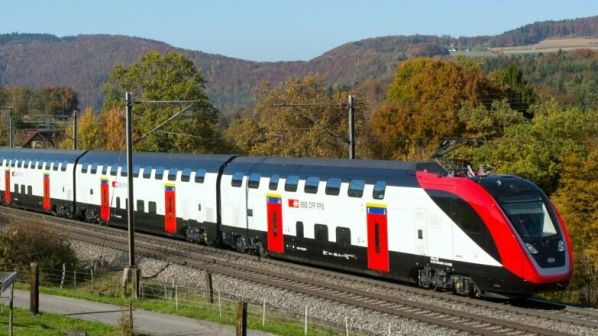SWISS Federal Railways (SBB) managed to reduce its annual loss from SFr 617m ($US 655.5m) in 2020 to SFr 325m in 2021, a reduction of 47.3%, thanks to increased government support, higher income and a reduction in costs.
SBB received SFr 330m from the government in 2021 to compensate for the effects of Covid-19 compared with SFr 227m in 2020.
Nevertheless, net interest-bearing debt increased by SFr 720m to more than SFr 11bn. SBB says the debt coverage ratio of net interest-bearing debt to Ebitda is 13.7, which is double the upper limit of 6.5 set by the government. SBB currently estimates that the coronavirus pandemic will cost SBB around SFr 3bn in total.
To ensure its finances are in a sustainable position by 2030, SBB has prepared a stabilisation package together with the government, whereby SBB will implement savings of around SFr 6bn by 2030. This will be accompanied by further annual saving and/or yield optimisation measures of SFr 80m from 2024 to 2030. “This remains a challenge,” SBB says.
Operating income rose by 7.1% from SFr 9.2bn in 2020 to SFr 9.87bn in 2021. While SBB’s passenger division managed to reduce its annual loss by 26% from SFr 669m in 2020 to SFr 495m last year, partly thanks to a 6.8% increase in passenger-km to 12.5 billion and a 31.5% jump in ticket sales to SFr 118.1m, the freight division turned a 2020 loss of SFr 26.4m into a profit of SFr 17.5m in 2021. Net tonne-km rose by 7.5% from just under 16 billion in 2020 to 17.17 billion last year. SBB cut overall operating expenses by 3.7% to SFr 10.1bn in 2021.
Challenging year
SBB says it regards 2021 as “another extremely challenging year” marked by the Covid-19 pandemic. “Demand recovered from the summer onwards but fell again towards the end of the year during the fifth wave of the pandemic,” SBB says. “A total of 885,000 passengers travelled with us each day in 2021; this is 4.9% more than in 2020 but 33.1% less than the year before the pandemic in 2019. Leisure travel has experienced a stronger recovery than business travel. Many commuters continued to work from home in 2021.
“For international passenger services, the occupancy rate was around a third lower than in 2019, though it varied significantly depending on the restrictions in force in individual countries. During the summer of 2021, SBB even reached 2019 levels for some destinations.
“Although the number of customers in stations increased by 3.6% from 2020, this figure remained 30.5% lower than the 2019 value.”
SBB unveiled its 2030 strategy at the end of 2021. SBB will start by trying to win back passengers lost due to the pandemic by testing new travel card formats, offering attractive class upgrades, improving customer information during disruptions, offering more connections, providing more bicycle spaces, developing stations as transport interchanges and driving forward digitalisation. SBB intends to stabilise its operations and timetable by 2025.

